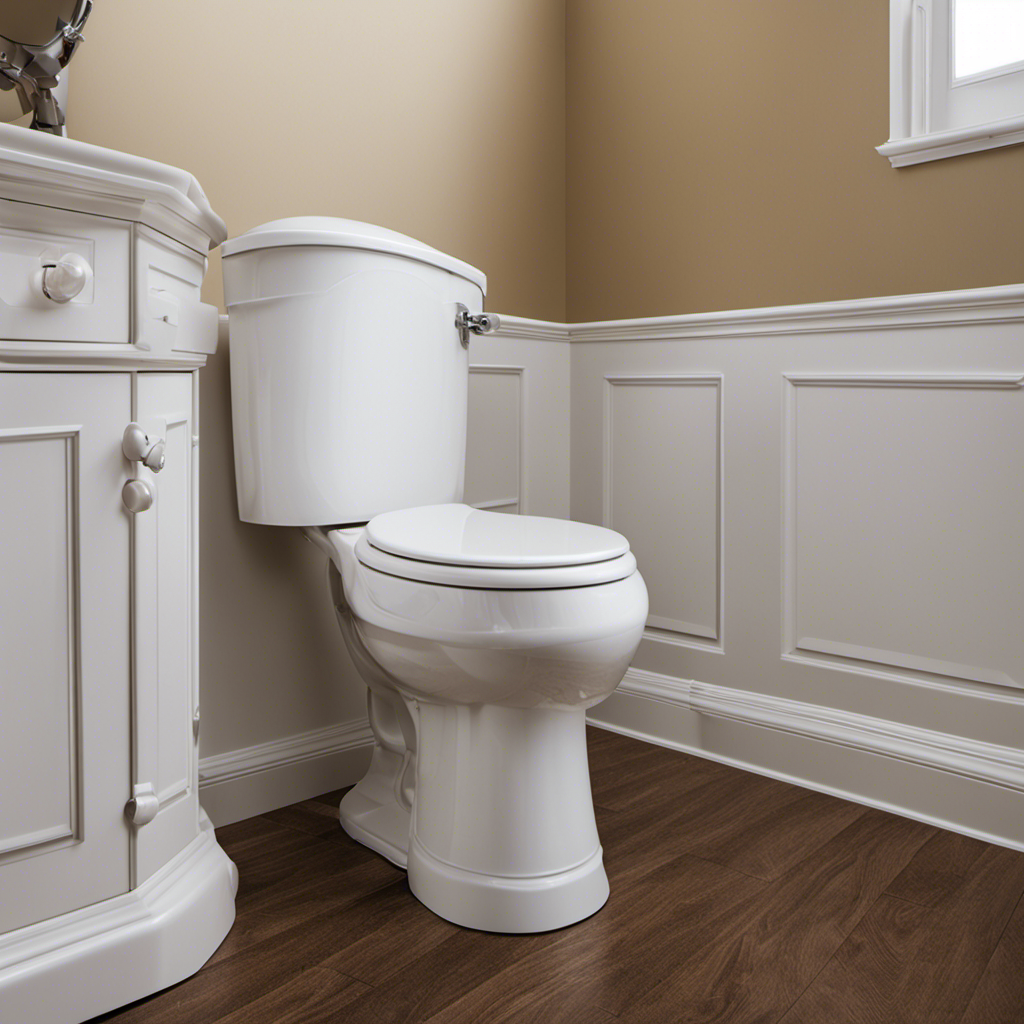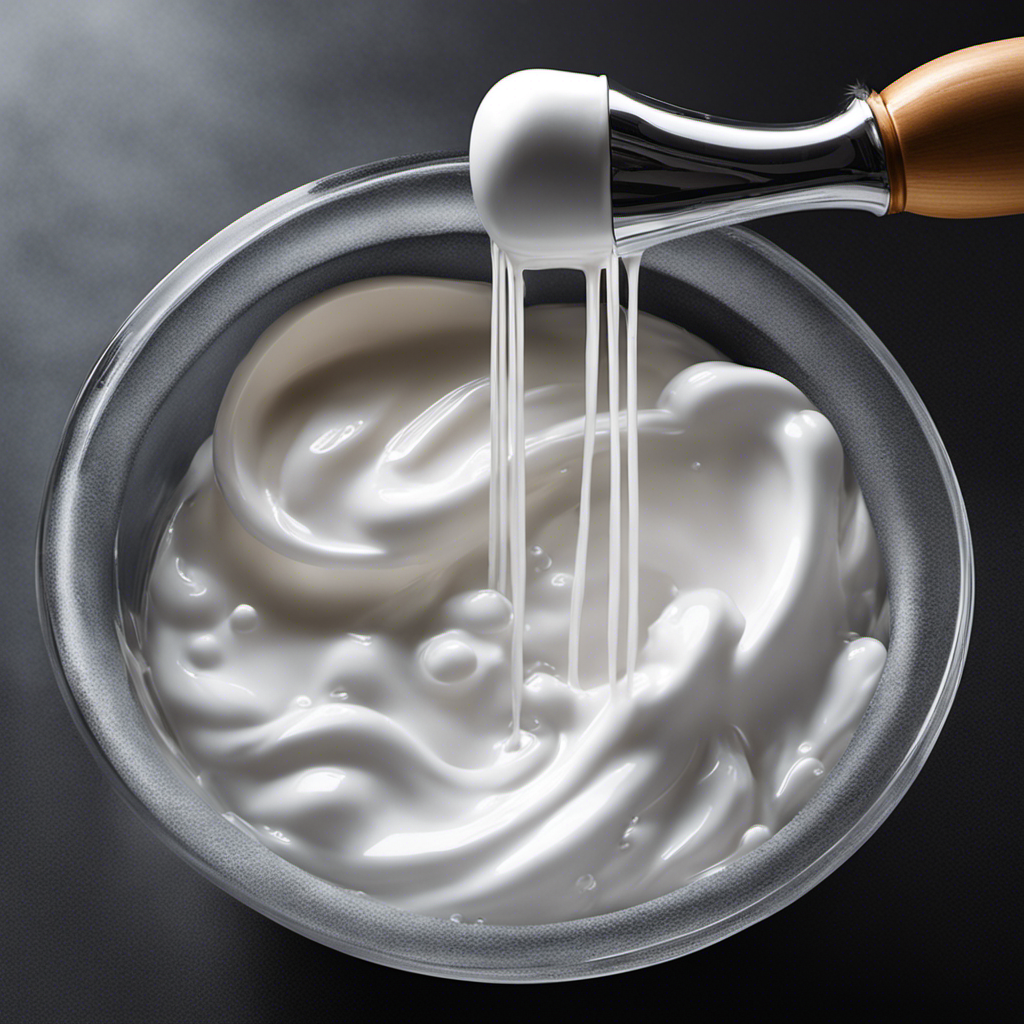Have you ever felt that dreadful sensation when you flush the toilet and there’s suddenly no water? It’s a scenario that can make us feel powerless and irritated.
In this article, we will explore the causes of a water outage, the immediate effects of flushing without water, and the potential plumbing issues that may arise.
We will also provide you with steps to take when the water is off and precautions to prevent future problems.
Get ready to master the art of handling toilet mishaps without water.

Key Takeaways
- Flushing the toilet without water can lead to waste accumulation, unpleasant odors, and potential health hazards.
- It can also increase the risk of clogs and potential damage to the toilet’s mechanisms.
- Decreased water pressure can affect the flushing mechanism and flushing without water can lead to clogged pipes and blockages.
- In the event of a water outage, it is important to conserve available water and use alternative sources for flushing.
Causes of a Water Outage
One common cause of a water outage is a burst pipe in the plumbing system. This can occur due to various factors, such as freezing temperatures, excessive water pressure, or corrosion.
When a pipe bursts, it can lead to a sudden loss of water supply and potential damage to surrounding areas. To troubleshoot this issue, it’s important to locate the burst pipe and turn off the main water supply to prevent further leakage.
Repairing or replacing the damaged section of the pipe is typically necessary to restore water flow. It’s advisable to seek professional assistance for complex repairs or if multiple pipes are affected.
Regular maintenance and inspections can help identify potential issues and prevent water outages caused by burst pipes.

Immediate Effects of Flushing Without Water
When we flush the toilet without water, the immediate effect is a lack of flushing power and the waste remains in the bowl. This can be caused by a water outage or a deliberate action taken to conserve water during emergency situations.
The consequences of flushing without water include:
- Waste accumulation: Since there’s no water to carry away the waste, it will remain in the bowl, leading to unpleasant odors and potential health hazards.
- Increased risk of clogs: Without the force of water, solid waste may not be able to move through the plumbing system effectively, increasing the likelihood of clogs.
- Potential damage to the toilet: Flushing without water can put additional strain on the toilet’s mechanisms, potentially resulting in damage that will require repair or replacement.
- Inefficient use of resources: Flushing without water during emergency situations is a necessary measure, but it’s essential to conserve water to ensure its availability for other critical needs.
Potential Plumbing Issues to Watch Out for
Moving on to the potential plumbing issues to watch out for when flushing the toilet without water, we may encounter a range of problems that can arise from this practice. One of the main issues is the decrease in water pressure. Without enough water to create the necessary force, the flushing mechanism may not function properly, resulting in incomplete flushing or even a complete failure to flush.
Additionally, flushing without water can lead to clogged pipes. The lack of water can cause debris, such as toilet paper or waste, to get stuck in the pipes, leading to blockages and potential backups. Therefore, it’s crucial to be mindful of these potential plumbing issues when the water is off.
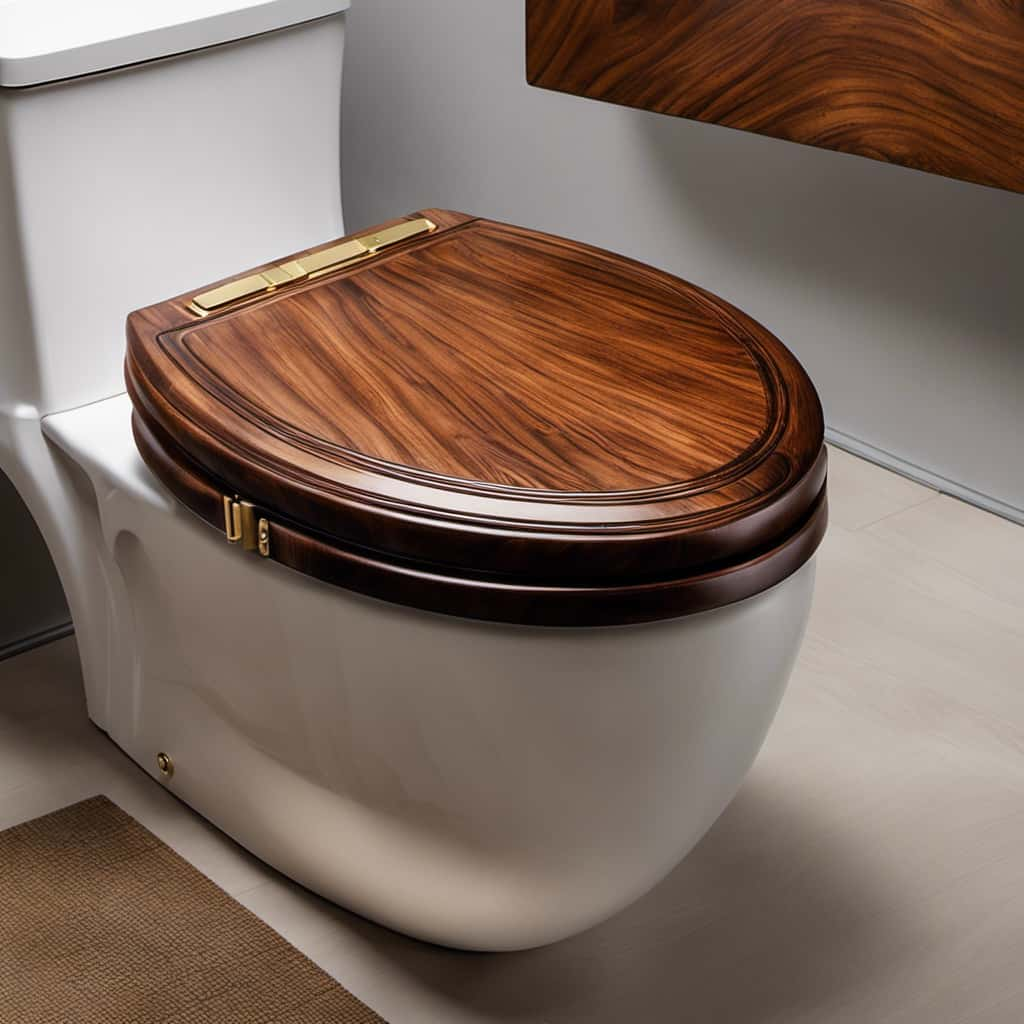
Now, let’s move on to discussing the steps to take when the water is off.
Steps to Take When the Water Is off
To address the issue of flushing the toilet when the water is off, we need to consider the steps we should take. In such situations, it’s crucial to remain calm and act quickly. Here are some emergency solutions to help you navigate this predicament:
- Check the water supply: Verify if the water is off throughout the entire house or if it’s isolated to the toilet. This will help determine the extent of the problem.
- Contact a plumber: If the water is off throughout the house, it may be a larger issue that requires professional assistance. Get in touch with a reliable plumber to assess and fix the problem.
- Use alternative water sources: In the meantime, consider using water from other sources, such as a nearby sink or a bucket filled with water, to manually flush the toilet.
- Conserve water: During this time, it’s essential to minimize water usage to prevent further complications and conserve any available water.
Precautions to Prevent Future Problems
To avoid similar issues in the future, we should regularly check and maintain the toilet’s water supply. By doing so, we can prevent damage and ensure efficient water conservation.
One important precaution is to inspect the toilet’s fill valve and flapper regularly. These components can wear out over time, leading to water leakage and potential damage. Replace any worn-out parts to maintain proper water flow and prevent any unexpected water shut off.
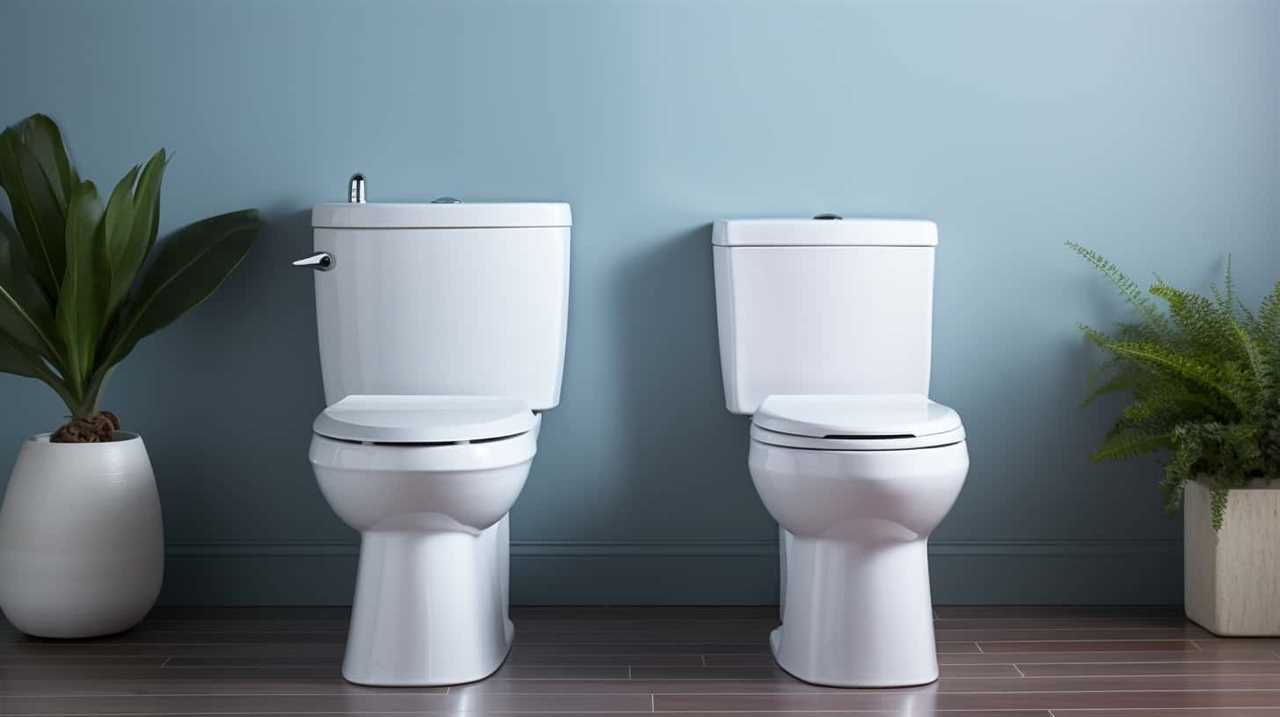
Additionally, it’s crucial to monitor the water pressure in the toilet’s supply line. High water pressure can strain the system and cause leaks. Consider installing a pressure regulator to maintain optimal pressure levels and prevent damage.
Lastly, encourage water conservation by using dual-flush toilets or installing water-saving devices like toilet dams or adjustable flappers. These precautions will help prevent future problems and promote sustainable water usage.
Frequently Asked Questions
How Long Does a Water Outage Typically Last?
During a water outage, it is important to know how long it typically lasts in order to prepare. To conserve water, minimize flushing toilets and use alternative sources like stored water or bottled water.
Are There Any Health Risks Associated With Flushing the Toilet Without Water?
There are health risks associated with flushing the toilet without water. It can lead to plumbing damage and negatively impact sanitation. It is important to address this issue promptly to avoid further complications.
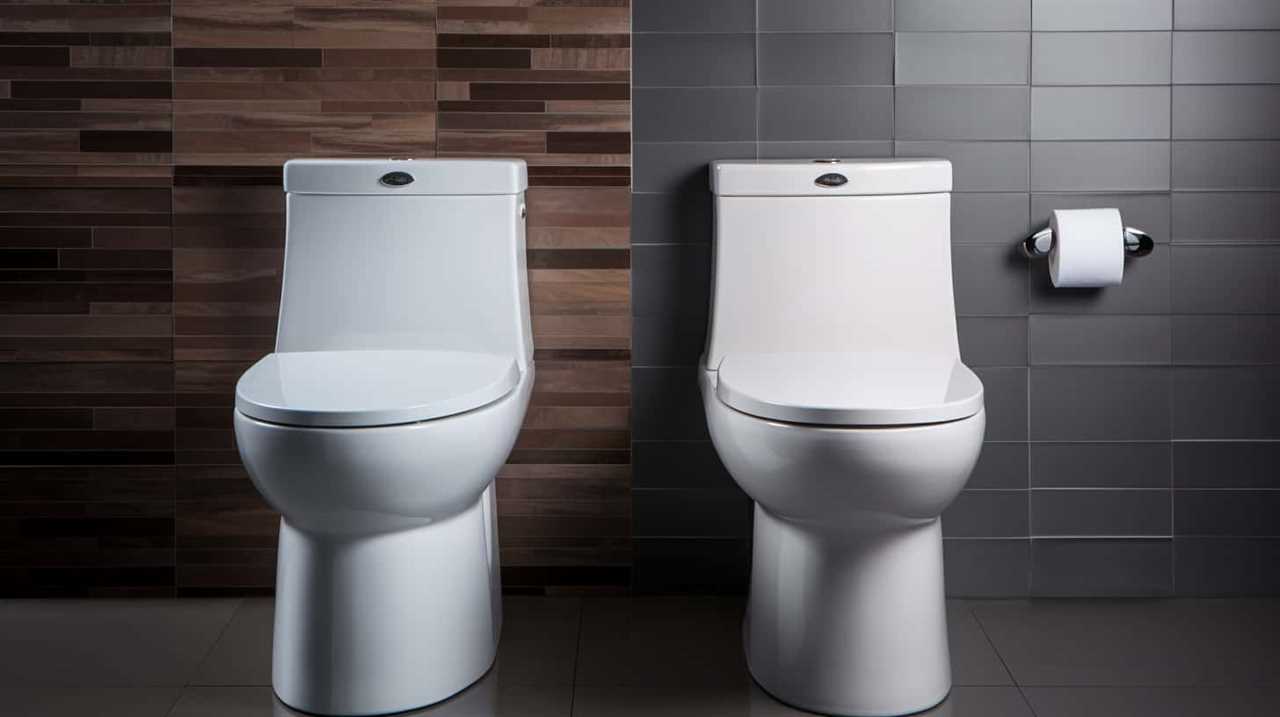
Can Flushing the Toilet Without Water Cause Damage to the Plumbing System?
Flushing the toilet without water can potentially damage the plumbing system. The force of the flush relies on the water supply to properly remove waste. Without water, the system may not function as intended, leading to clogs or other problems.
Are There Any Alternative Methods to Flush the Toilet When the Water Is Off?
When the water is off, there are alternative methods to flush the toilet. One emergency solution is to pour a bucket of water into the bowl forcefully, mimicking the action of a regular flush.
What Should I Do if the Water Outage Persists for an Extended Period of Time?
If the water outage persists, our emergency preparedness plan should include water conservation methods such as using alternative sources, like rainwater or stored water, for non-drinking purposes.
Conclusion
In conclusion, flushing the toilet when the water is off can lead to immediate issues such as a lack of flushing and potential plumbing problems. It’s important to take steps to address the situation, such as using alternative water sources or contacting a plumber.

To prevent future problems, it’s recommended to regularly check for any water outages and have a backup plan in place. For example, imagine a family experiencing a water outage and having to resort to using buckets of water to manually flush the toilets until the issue is resolved.



